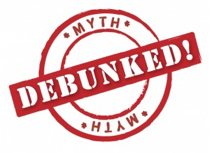
As a junior banker at Goldman Sachs in the early ‘90s I was weaned on the conventional wisdom that growth companies were ready to go public when they reached the $100M annualized revenue figure (ie, a $25M quarter) and had at least 2 quarters of profitability under their belts. The “$100M Revenue” theory was based on the idea that a company must be large enough to both (i) withstand competitive pressures and (ii) earn a large enough market capitalization (or market value) to enable the company to sell enough stock to institutional buyers in its IPO without suffering massive dilution in the process.
This theory makes no sense and, despite the fact that many bankers and VCs still cling to it like religion, there are multiple counter examples debunking the theory.
In fact, in my opinion there are four factors that far more important when gauging IPO readiness and the likelihood of success than the “$100M Revenue” theory:
- Predictability & Visibility. If your business is $50M in revenue but you know with high precision what next quarter, or even next year, is going to look like, you pass the test. On the other hand, even if your business is $200M in revenue, if you can’t reliably predict what is around the corner, watch out.
- Underlying Growth & Market Size. When CEOs fall into the trap of sketching out for me their plan to ascend to $100M in revenue to “get out” in an IPO, I always ask them the following: “what is your plan to get to $300M in revenue?” The IPO is not an end game. A better analogy – the IPO is the second half. You need to ratchet up your game and be ready. If you’re growing fast and have a large market in front of you, $300M or more will seem like a breeze and public investors will reward you. If, on the other hand, you eke out growth to $100M in a small market and go IPO, don’t expect to have a fun run as a public company.
- Competition. Strong competition is fine, but the market will most always reward the market leader with a disproportionate share of the market value of a sector. This is especially true if the leader can show that its extending the lead. If you have fierce competitors who subject your future to undue risk (ie, a less predictable future), watch out.
- Management Team. Time and again, highly skilled teams show more ability to have successful IPOs than poorer teams. Strong communicators with big visions who don’t surprise negatively, manage expectations well and deliver. That’s what you need to be successful. Motherhood and apple pie.
So there you have it, an alternative set of requirements to the $100M Revenue Milestone. Lets call them the Fab Four. Hint – look for references to the Fab Four in upcoming posts!